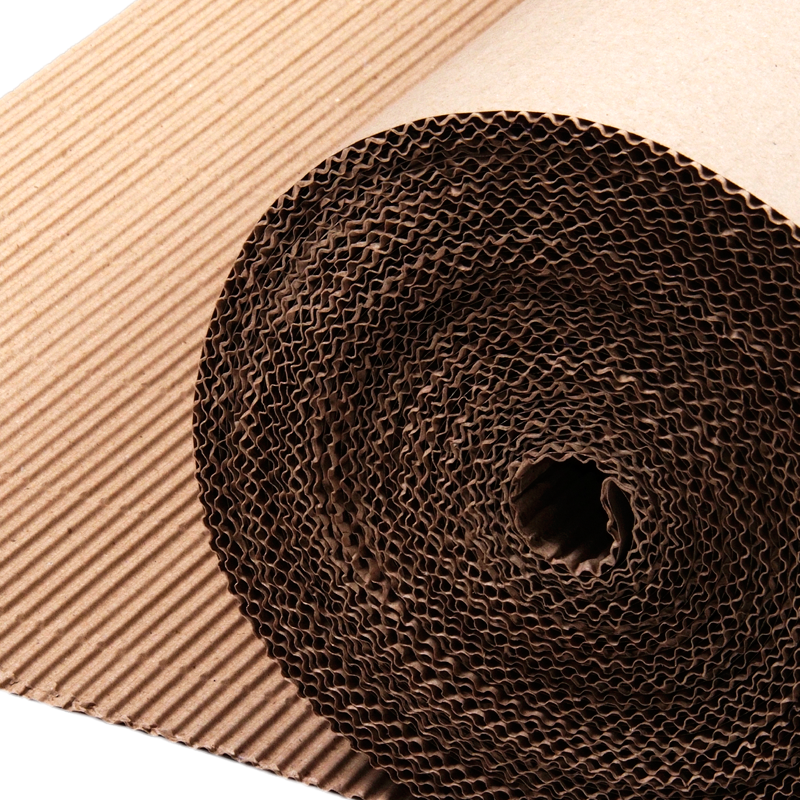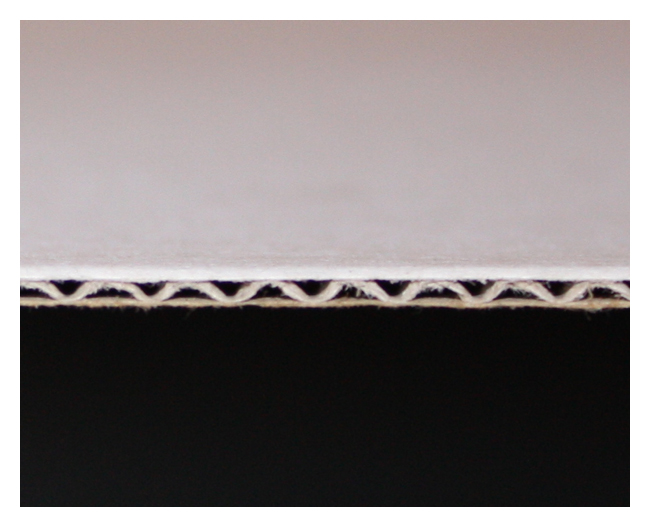A few words about packaging
When producing packaging, we use several types of raw material:
- Cardboard, i.e. multi-layer coated paper with a basis weight ranging from 180 g to 450 g. Material dedicated for products such as: small-sized packaging (e.g. for cosmetics), product wrappers, folders, rigid envelopes, advertising wobblers, calendar pads, lining for laminated cardboard packaging
- Solid cardboard or beer mat board, also called “coaster board”, is the hardest printing material made from 100% recycled paper. We use this raw material in the production of hard covers for catalogues, binders, stands, and beer mats. Solid cardboard is perfect for making, for example, boxes for game sets.
- Corrugated cardboard is a type of material that we use most often to produce packaging. For this reason, we hope you become acquainted with some more information about this raw material.
STRUCTURAL DESIGN OF CORRUGATED CARDBOARD
Corrugated cardboard is made by combining two to seven layers of liners, with the corrugated (“fluted”) material in the centre (source: Wikipedia).
There are several basic types of corrugated cardboard available on the market, which differ in the number of layers and the height of the flutes.
cross-section of a sheet:
A – the height of the flute
B – the distance between the flutes
TWO-LAYER CARDBOARD
PARAMETERS
height of the flute: ca. 2 mm
basis weight: 240 g/m2
colour variants: grey-grey or white-grey
As the name suggests, this type of cardboard has the least number of layers, and consists of two liners: flat and corrugated.
It comes in a grey version or is bleached white on one side and has a basis weight of 240 g.
This type of raw material is used for repeat, high volume orders for packaging where the price of the product is also important, next to product quality.
We laminate the double-layer cardboard with printouts made on mm liner, kraftliner and GD 2 board.
Products packed in boxes made of double-layer cardboard can often be found on the shelves of large chain stores.

THREE-LAYER CARDBOARD
PARAMETERS
E flute (microflute), height of the flute: approx. 2 mm, basis weight: 360 g/m2
colour variants: grey-grey, white-white or white-grey
B flute, height of the flute: approx. 2.5–3 mm, basis weight: 400 g/m2
colour variants: grey-grey, white-white or white-grey
C flute, height of the flute: approx. 3–4 mm, basis weight: 400–600 g/m2
colour variants: grey-grey or white-grey
Three-layer cardboard is the material we use most often to produce all types of laminated packaging with flexographic printing or transport boxes.
This material can be covered with a fully printed sheet of almost any paper or cardboard or printed in one colour using the flexographic printing method.
Paper printed and laminated on this cardboard can receive any finishing: film, UV varnish, embossing, or hot-stamping.
You can use three-layer cardboard to make both elegant gift boxes and robust transport boxes.

MULTI-LAYER CARDBOARD
Modern industrial solutions generate demand for increasingly more solid cardboard, which consists of a minimum of 3 layers. Although it is more robust, this type of cardboard is more difficult to process.
Here are the two primary types of multi-layer cardboard:
Five-layer cardboard
EB mixed flute, height of the flute: approx. 5 mm, basis weight: 650–850 g/m2

BC mixed flute, height of the flute: approx. 6–7 mm, basis weight: 690–1500 g/m2

Corrugated cardboard and packaging are usually measured with the following solutions:
FCT – flat crush resistance – measured in N – describes how much pressure must be applied to the cardboard for the flutes to deform. A sheet of cardboard is laid flat between two pressing plates. In practice, this parameter means high resistance of cardboard in the event of an impact or puncture.
ECT – edge crush resistance (vertical) – measured in N – describes how much pressure must be applied to the cardboard for the sheet to deform. A sheet of cardboard is placed vertically in the press.
BCT – box crush test – measured in N – this test consists in compressing the box between two parallel boards until the side walls of the cardboard deform.


